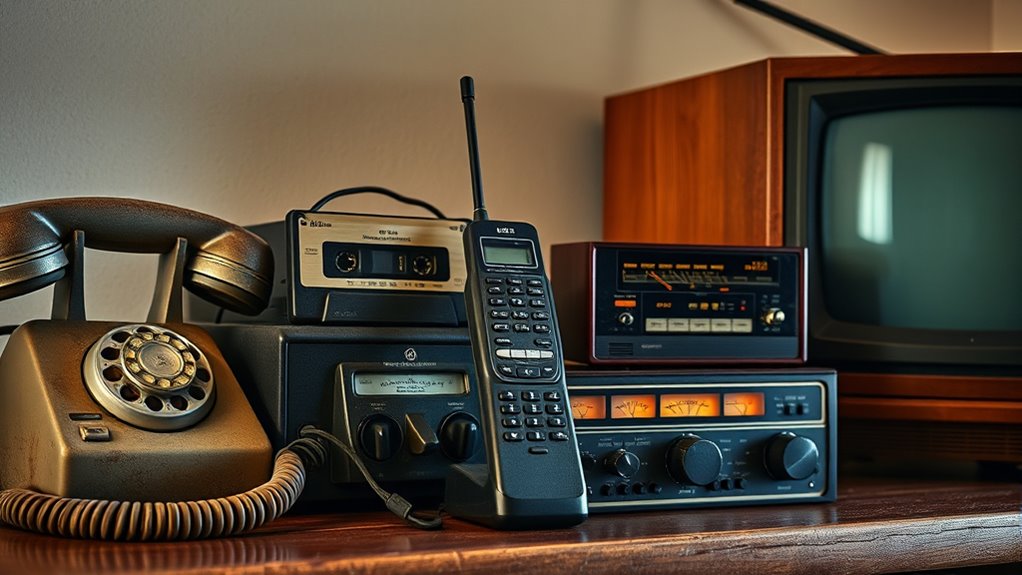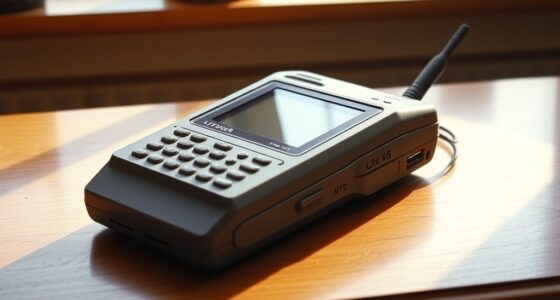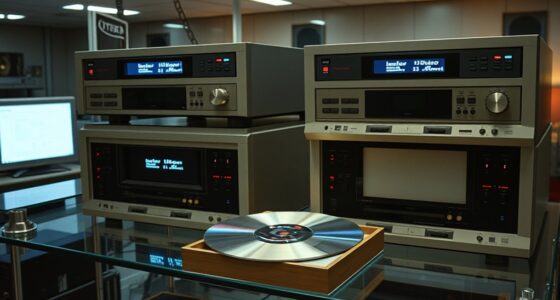Many home gadgets from the 20th century have faded but shaped daily life. You might recall using a rotary dial phone, which required manual dialing and no power. Vacuum tube radios offered warm, rich sound, while mechanical timer clocks kept tasks on schedule without electricity. Analog TVs gave nostalgic visuals, and cassette recorders let you create mixtapes. Curious to see how these gadgets worked and impacted homes? Keep exploring to uncover their fascinating stories.
Key Takeaways
- Rotary dial telephones required manual dialing, offering a tactile experience and no external power dependency.
- Vacuum tube radios produced warm, rich sound, blending craftsmanship with vintage electronics.
- Mechanical timers used gears and springs for precise, electricity-free time management in various settings.
- Analog television sets displayed images via CRTs, providing nostalgic visuals with signal and environmental sensitivity.
- Cassette tape recorders allowed personalized music playback and recordings, fostering a hands-on, nostalgic audio experience.
Rotary Dial Telephones
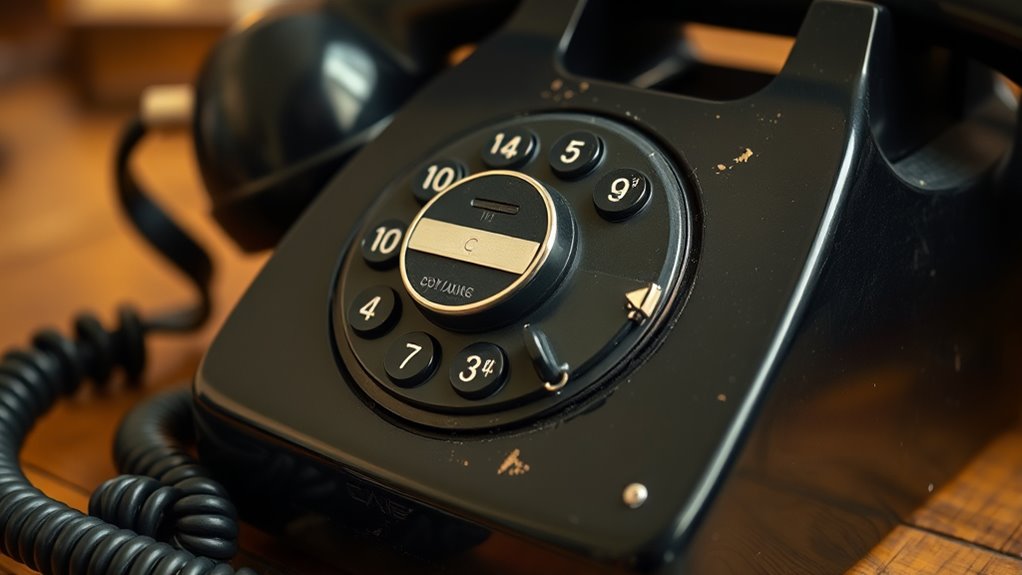
Before cell phones became the norm, rotary dial telephones were the primary way people made calls. You’d pick up the corded phone and use manual dialing to connect with someone. Instead of pressing buttons, you’d turn the rotary dial to each number, listening for the clicks as it spun back. This process might have taken longer, but it was a reliable way to communicate. These corded phones were bulky and stationary, often sitting on a table or mounted on the wall. The rotary dial mechanism was simple yet effective, requiring no power beyond the phone line itself. It’s a nostalgic reminder of an era when making a call was a deliberate, tactile experience, quite different from today’s quick, touchscreen interactions. Additionally, the reliability of analog systems meant that these phones could function during power outages, ensuring continued communication when digital systems might fail.
Vacuum Tube Radios
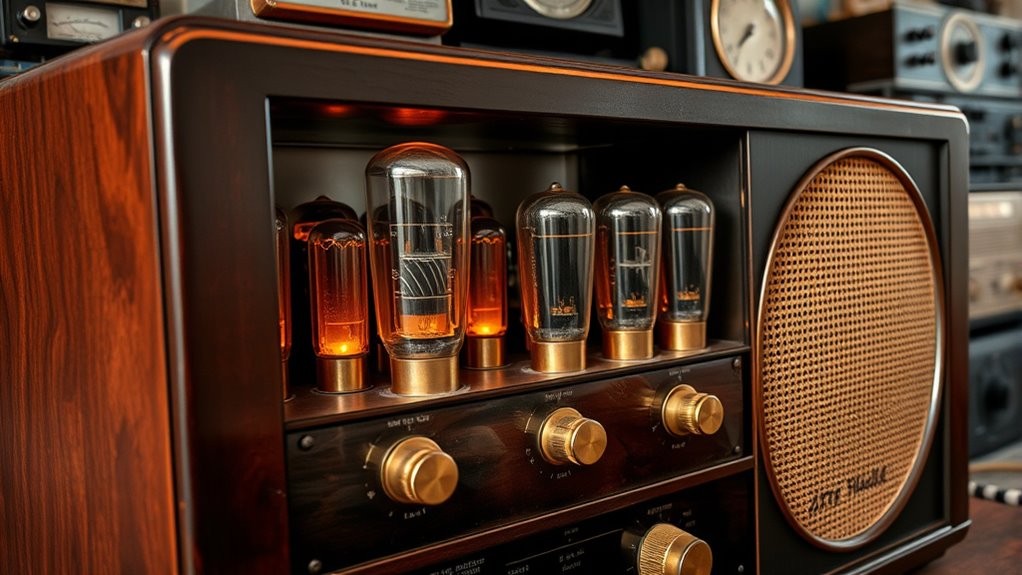
Have you ever wondered how early radios produced such warm, rich sound? It all comes down to vacuum tube technology, which was the backbone of radio design for decades. These tubes amplified audio signals, creating the distinctive, nostalgic sound quality that many still cherish today. Unlike modern digital radios, vacuum tube radios offer a unique listening experience filled with subtle harmonics and natural warmth. They often feature large, glass components that add to their vintage charm. Operating a vacuum tube radio feels like connecting with a bygone era, where craftsmanship and engineering combined to deliver rich audio. Additionally, the amplification process in vacuum tube radios contributed to their warm, full-bodied sound, setting them apart from later transistor-based models. If you appreciate the authentic, full-bodied sound of early broadcasting, vacuum tube radios are a timeless reminder of home entertainment’s simpler past.
Mechanical Timer Clocks
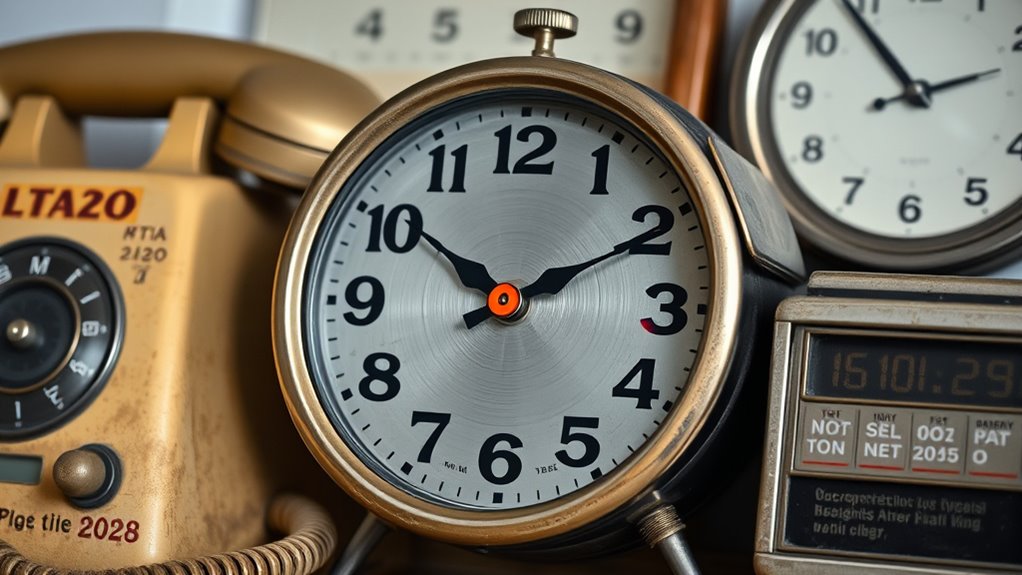
Mechanical timer clocks are simple yet reliable devices that keep track of time through intricate gears and springs. Their mechanical precision guarantees accurate timing without needing batteries or electricity. You wind the clock using a winding mechanism, which stores energy in a mainspring, powering the gears smoothly. As the spring unwinds, the gears turn steadily, moving the hands or activating connected devices. These clocks were commonly used in kitchens, industrial settings, and even in early automation systems. Their durability and straightforward design made them essential for controlling timed processes. You can easily set them for a specific duration, and they reliably trigger an alarm or switch off equipment once the time expires. Mechanical timer clocks embody a timeless blend of engineering and practicality, fundamental to many home and industrial functions of the past.
Analog Television Sets
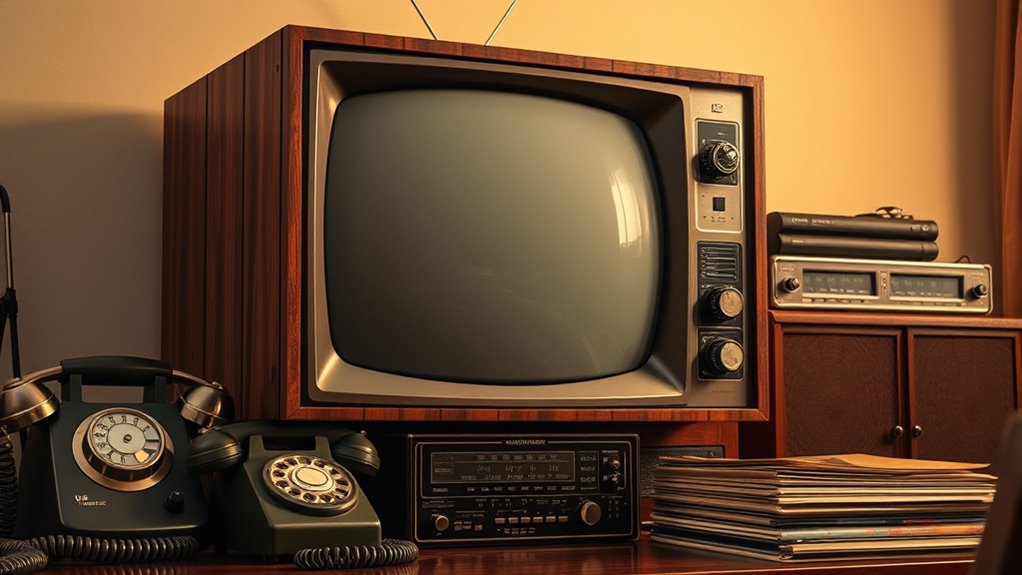
Analog television sets revolutionized home entertainment by transmitting broadcast signals as continuous electrical waves that your TV’s internal components decode into images and sound. The picture quality on these sets depended heavily on the display technology, typically cathode ray tubes (CRTs), which used electron beams to create images on the screen. While these displays offered a nostalgic, distinct look, their resolution was limited compared to modern digital screens. The sharpness and clarity of images were affected by signal quality, antenna positioning, and interference, often leading to flickering or ghosting. Despite these limitations, analog TVs provided a warm, familiar viewing experience that many still cherish. Their simplicity and durability made them household staples, even as newer technologies emerged to improve picture quality and display capabilities. Additionally, the analog signal transmission process was sensitive to environmental factors, which could further impact viewing experience.
Cassette Tape Recorders
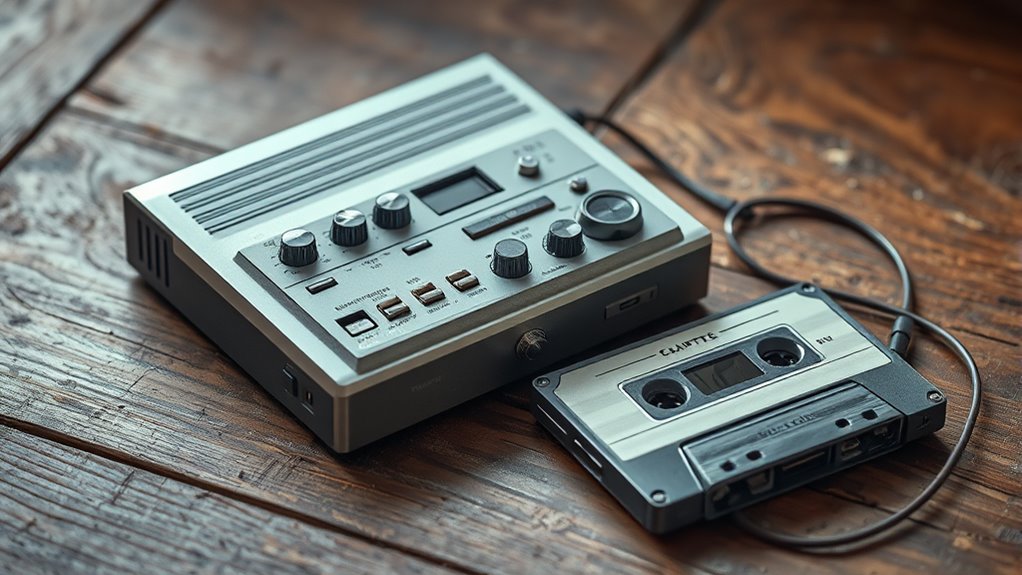
Ever wonder how people used to listen to music or record their thoughts before digital devices took over? Cassette tape recorders made that possible, letting you create your own music mixtapes or capture personal recordings. You’d insert a tape, press record, and let your voice or favorite tunes flow. Maintaining your tape deck was vital—cleaning the heads and checking the belts kept the sound clear and tapes from jamming. Making personalized mixtapes became a popular way to share music or preserve memories, giving you control over your sound collection. These portable devices offered a hands-on experience, connecting you directly to your recordings. Though largely replaced now, cassette tape recorders hold a nostalgic charm and remind us of a time when audio technology was more tactile and creative. Regularly assessing and rotating items helped in maintaining your tape collection and keeping your device in good working condition.
Frequently Asked Questions
How Did Rotary Phones Influence Modern Smartphone Design?
You see, rotary phones laid the groundwork for modern smartphones by influencing how we interact with technology. The rotary dial’s design led to touch-tone dialing, which revolutionized phone communication. Later, this concept evolved into number pads, making dialing faster and more efficient. These innovations shaped smartphone interfaces, enabling quick, intuitive input. So, without rotary phones, the seamless, touchscreen experience you enjoy today might not exist.
What Replaced Vacuum Tube Radios in Everyday Households?
You replaced vacuum tube radios with transistor radios in your home because they’re more compact, durable, and energy-efficient. Transistor radios use digital signal processing for clearer sound quality, making them more practical for everyday use. These portable devices offered convenience and better performance, so you could listen to your favorite broadcasts anywhere. As technology advanced, transistor radios became the standard, gradually replacing the older vacuum tube models in households across the world.
Are Mechanical Timers Still Used in Industrial Applications Today?
Imagine a steady heartbeat guiding a massive machine—mechanical timers still play that role in industrial automation today. You see, they provide reliable, simple control for processes where digital systems might falter. While automation advances, mechanical timers remain essential in certain industries, acting as the timeless guardians of precise timing. They’re like old sailors steering complex waters, proving that sometimes, tradition still commands the voyage.
How Did Analog TVS Impact Early Television Broadcasting Standards?
You see, analog TVs revolutionized early broadcasting by establishing standards for analog signal transmission, which allowed consistent picture and sound quality across channels. They influenced broadcast resolution, setting the groundwork for how images appeared on screens. As a result, broadcasters adopted specific resolutions to optimize viewing, making analog TVs central to shaping the technical norms of television, even as digital technology eventually replaced them.
What Are the Main Advantages of Cassette Tapes Over Digital Formats?
You’ll find that cassette tapes offer unique advantages over digital formats, especially in audio fidelity and portable convenience. Their analog sound provides a warm, nostalgic quality that many listeners prefer. Plus, they’re easy to carry around, letting you enjoy your music anywhere without needing power or internet. This combination makes cassette tapes a charming, practical choice for those who value authentic sound and simplicity in their listening experience.
Conclusion
You might be surprised to learn that, at its peak, over 50 million rotary dial phones were in use worldwide. While these gadgets are now mostly forgotten, they laid the foundation for modern technology. Remembering these devices shows how far we’ve come — from mechanical timers to smart homes. So, next time you stream your favorite show or make a call, think about the fascinating innovations that paved the way for today’s convenience.
